Search Results
Fine Jewelry University Articles matching: “European square shank bottom”
Showing only FJU Article results. Click here to show all results.
Fine Jewelry University (Show All FJU Articles)
-
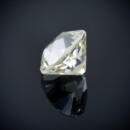
The History of Diamond Cuts
… cut or Peruzzi brilliant cut is another adaptation. The triple cut has 33 facets on the crown. The Old Mine and Old European Cuts When most people think of old diamond cuts they think of the Old Mine cut diamond. The Old Mine cut has the … round brilliant (in layout, not in angles or shapes) and others follow a design of their own creation. The Old European cut is the forerunner of the modern Brilliant Cut. The 58 facets have the same general shape, angle and layout as the …
-
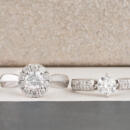
Anatomy of a Ring
… is generally said to start at the point that the design stops. A jeweler will usually add or remove metal from the bottom of the shank when sizing a ring. This can sometimes be done so well that you would never know it was sized looking at…even gold and platinum can wear away. In such cases a jeweler can “re-shank” the ring by replacing the metal at the bottom of the shank, going as far up the sides as the design and the extent of the wear require. If you are careful with …
-
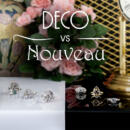
Art Deco vs. Art Nouveau Style Jewelry
… platinum were quite common as well. The diamonds used in Art Nouveau jewelry were typically Old Mine cuts, but Old European cut stones were also included as they became more popular. In contrast, Art Deco arrived in the 1920’s and 1930’s, …materials of choice for Art Deco jewelry makers. The most prevalent diamond cut found in Art Deco jewelry is the Old European cut, but some pieces still incorporated Old Mine cuts or transitional cuts. Design Principles Art Nouveau takes …
-
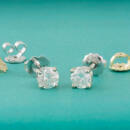
Styles of Earring Backs
… to sensitive skin. Gold options found on more valuable jewelry do not typically have this problem. Lever Backs (European Backs) Lever backs, sometimes called European backs, have a curved ear wire instead of a straight post, and have a …
-
Frequently Asked Question about Jewelry
… wide a gap between the SI2 and the I1 grade. Why not offer an SI3 grade to bridge the gap? After EGL – Los Angeles (European Gemological Laboratory) started to issue the SI3 grade, even the Rapaport Diamond Report, or the Rap Sheet as it’s … others waited until over 50 years. The reasons to redesign range widely: the ring is worn out (it would need a new shank and all new heads), the style is not right for me now, or, the very popular reason, going bigger/upgrade time. Does …
-
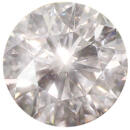
Diamond Buying Guide: The 4 C’s
… want. The photo above shows some common diamond carat weights and how they look in comparison to each other. Cut The Cut of a diamond has two main components. First, cut refers to the shape of the stone. Round, marquise, pear, oval, square, princess all describe the shape of the diamond. Checkout the picture above to see examples of the most popular diamond shapes. There are many more shapes than we can list here and there are even variations on the common shapes with …
-

How Are Lab Grown Diamonds Made?
… and temperature to grow the diamond. The 10.02ct HPHT Diamond Made by NDT. Thanks to IGI for sharing this video. The GE invention of the belt press uses an upper and lower anvil to generate pressure over 1.5 million pounds per square inch and temperature above 2,000 degrees Celsius. In this environment, the pure carbon melts and begins to form into a diamond around the starter seed. On December 16, 1954, a belt press was used to create the first reproducible lab grown …
-
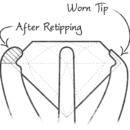
Jewelry Repair FAQ
… idea to check if your ring has any loose stones. The easiest way to do this is to listen for a faint rattling sound from your ring. Every so often, take your ring off, hold it very close to your ear with one hand and gently tap the bottom of the ring with the other. If you hear a rattling sound, a gemstone might be loose. We recommend you stop wearing the ring immediately and bring it in so one of our jewelers can evaluate it for you. Another test you can do is to gently…
-
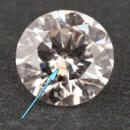
What Are Lab Grown Diamonds?
…variations in crystal structure are one of the main ways to differentiate between lab grown and natural diamonds. You can also learn more about how to tell if a diamond is lab grown or natural from our main article on the subject. The bottom line: lab grown diamonds are just like natural diamonds, but man-made. Diamond simulants are not the same as diamonds. They have the general look of diamonds but not the same properties. Now that you understand what a lab grown …